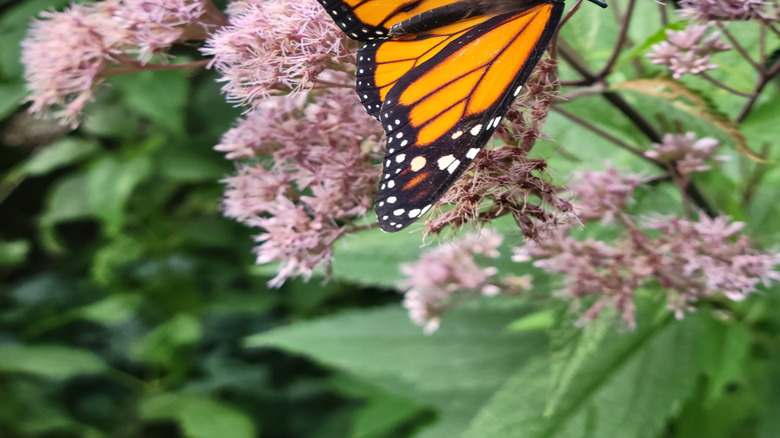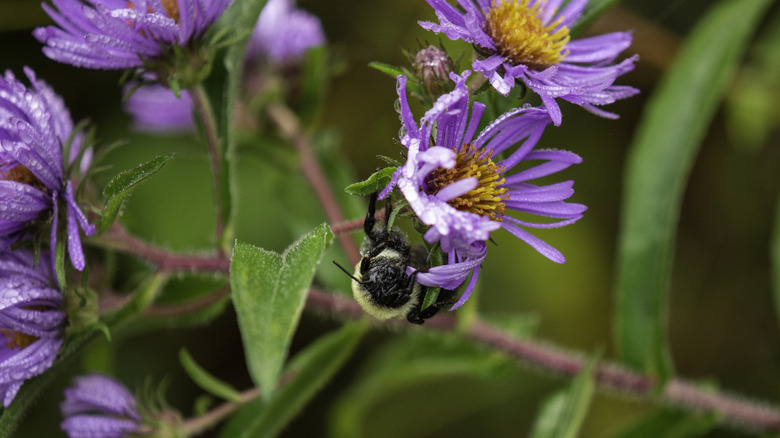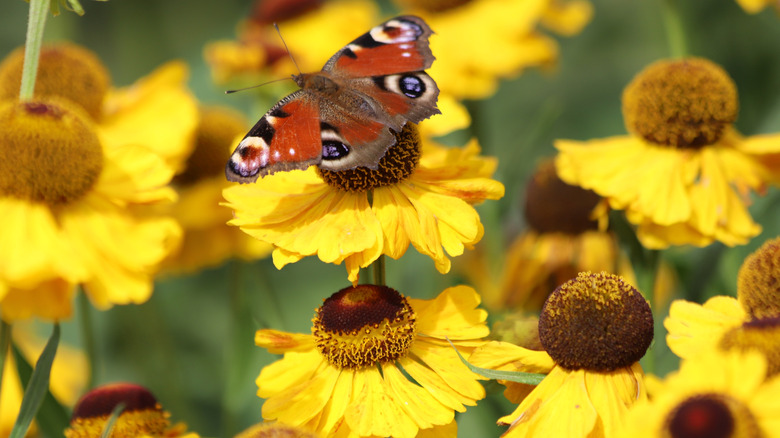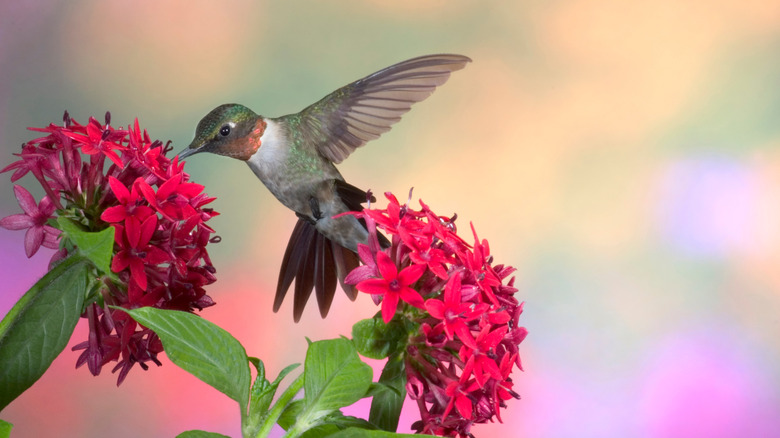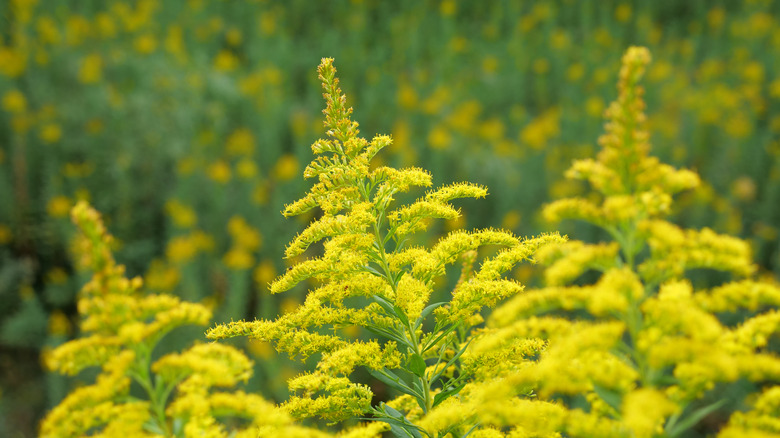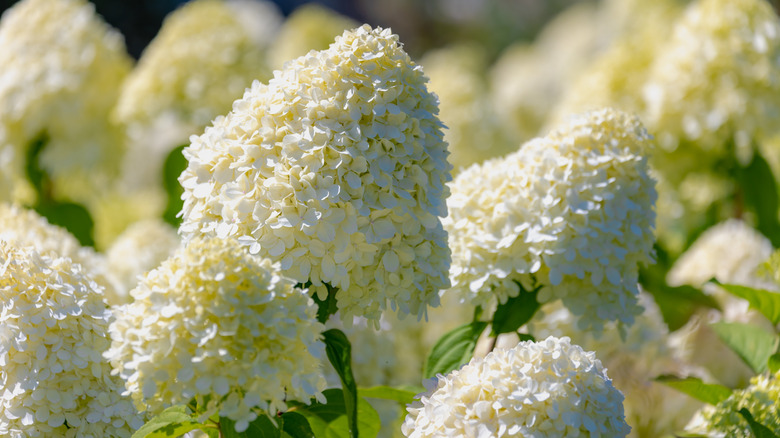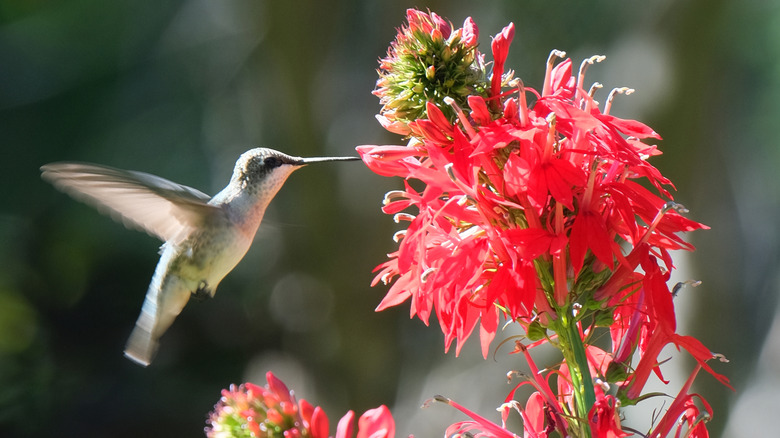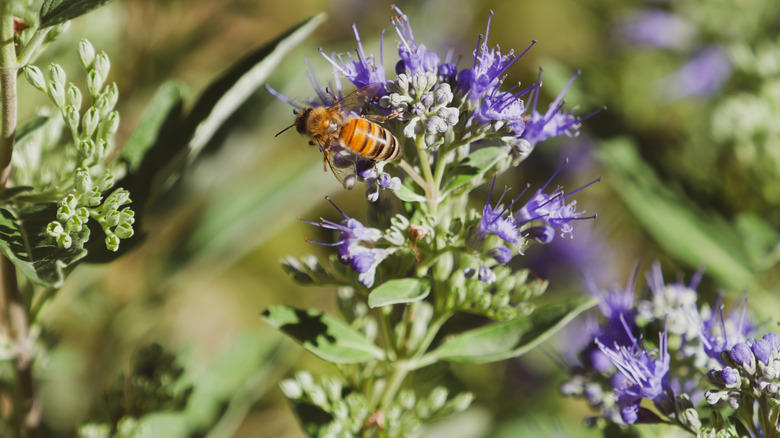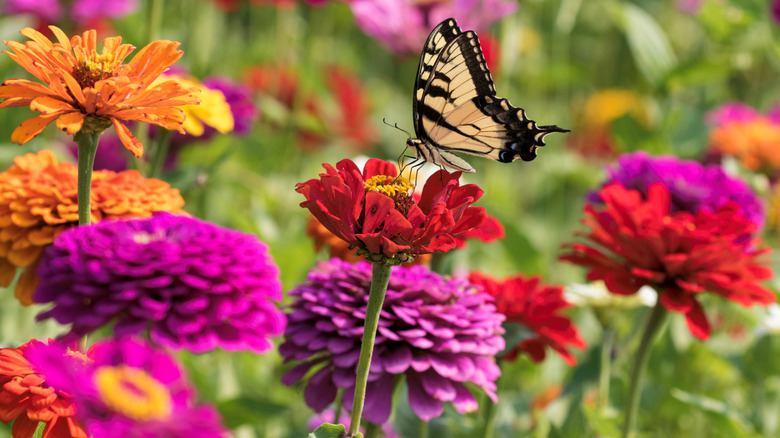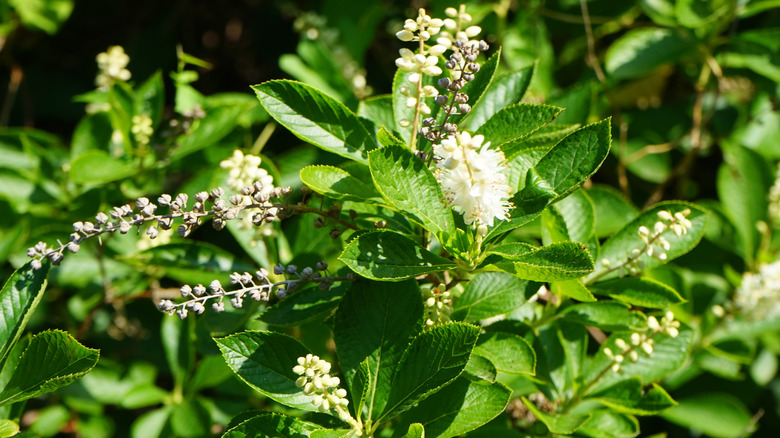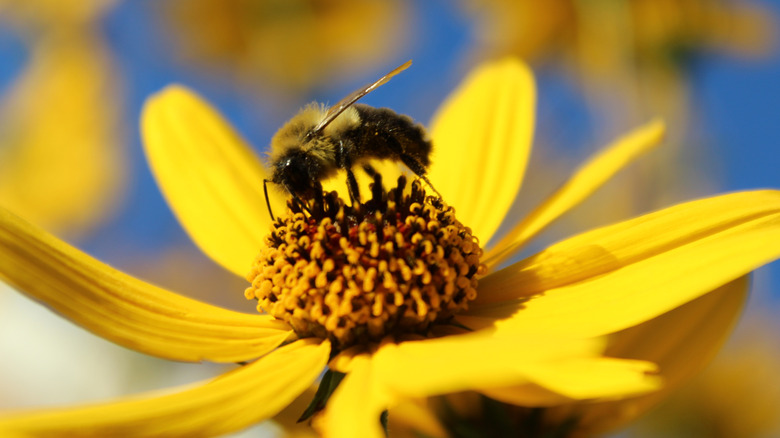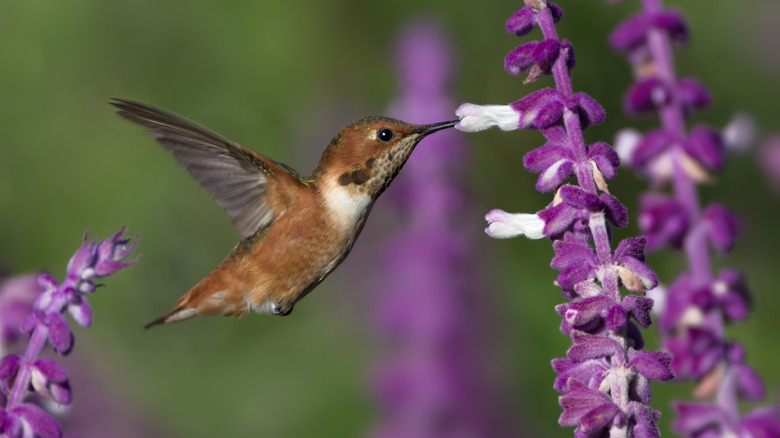12 End-Of-Summer Plants That'll Keep Your Garden Full Of Pollinators Through Fall
The butterflies, bees, and hummingbirds we nurture all spring and summer still need nourishment after the long days of August wane. Just like us, they may not be ready to say goodbye to summer delights, and they have to get ready for colder times ahead. The end of the summer is when bees and other pollinators begin seeking food to prepare themselves for winter, so any thoughtfully planned pollinator garden should include plants that come into flower a bit later than the others or keep up their blooming habit into the fall.
Luckily, there's a vast bouquet of pollinator-attracting plants to add in as you transition your garden from summer to fall, including annuals, perennials, and flowering shrubs. If you have perennials in your plans, they should be planted at least four weeks before a hard frost is expected in your area. The choices come in a variety of colors, so it's possible to meet the vital needs of your pollinating friends and cater to your human aesthetic preferences at the same time. We've gathered many options in one place to help you brainstorm your best strategy for adding late-blooming flowers to your garden.
1. Joe-Pye weed
The pinkish-purple blooms of Joe-Pye weed (Eutrochium maculatum) emerge in whorls from summer through fall, attracting pollinators that include bumblebees, migrating monarch butterflies, and even hummingbirds. Its tolerance of wet conditions makes it a great choice to add to a rain garden. Grow Joe-Pye weed in USDA Hardiness Zones 3 to 8 in moist soil, either in full sun or spots that are partially shaded in the afternoon. When the end of fall rolls around, you may be able to divide the plant and transfer some of it to a new corner of your garden.
2. New England aster
New England Aster (Symphyotrichum novae-angliae) dots gardens and yards with its purple star-like blooms in the late summer through autumn days. The plant, which is a magnet to various types of bees, butterflies, and moths, flowers from August through October and is cold-hardy in zones 4 to 8. When other sources of nectar may dwindle, this aster is a prolific flowerer, particularly benefiting the caterpillars of pearl crescent butterflies as a host plant.
3. Sneezeweed
Don't be put off by its common name. Sneezeweed (Helenium) is not a weed that causes sneezing. It belongs to the same family as asters, and has yellow ray flowers that bloom from September to sometimes November. Bees and butterflies that flitter around later in the year have been known to feed on the nectar and pollen at the flowers' center, and butterfly larvae also use the plant as a food source (but it's poisonous to humans). Give this sun-loving plant at least six hours of direct sunlight and it should be happy in hardiness zones 3 through 9.
4. Pentas
Pentas (Pentas lanceolata) plants have a habit of blooming all summer, and their star-shaped flowers are attractive to both butterflies and caterpillars. Planting pentas (especially those with red blooms) can also help make your garden a hummingbird haven, whether you plant them in the soil or as part of a container garden near a feeder. They can spread out to about 15 inches wide and 3 feet tall in a garden bed. Grow them as a perennial in hardiness zones 10 and 11 in spots that get full sun or partial shade.
5. Goldenrod
The stretch from July through September is the time to shine for goldenrod (Solidago). This yellow-blooming wildflower develops a nectar in the late summer heat that nourishes butterflies, bees, wasps, and hummingbirds. Even though it blooms at the same time as a common allergen (ragweed), pollen from goldenrod is too heavy to get carried away by the wind and cause sniffles. Instead, pollinators distribute it, meaning they will hang around in your garden. The plant is hardy in zones 2 through 8, can tolerate poor soil, and prefers to be grown in full sun.
6. Panicle hydrangea
Why not diversify your late summer garden by adding some shrubs? Panicle hydrangea (Hydrangea paniculata) is a quick-growing shrub that rewards gardeners with white blooms in summer and keeps going through the autumn. Pollinators are only attracted to non-sterile cultivars, like 'Pinky Winky' and 'Chantilly.' They do well in partial shade or full sun in hardiness zones 3 through 8. Even when the blooms fade, you can enjoy the foliage year-round. Be aware, however, that the New Jersey Invasive Species Strike Team has placed panicle hydrangea on a watch list for its potential to threaten native plants.
7. Cardinal flower
The shape of a cardinal flower (Lobelia cardinalis) is perfect for the pollinator it depends the most on: hummingbirds. Butterflies and other pollinating insects also flock to the flower, which blooms from July to October. Hardy in zones 3 to 9, it's an especially great choice if you're in an area that can get late summer and early fall flooding, since it prefers wet soil conditions. Although it grows in a variety of light conditions, filtered or dappled light is its favorite. Because of this plant's poisonous compounds, plant it far from children and pets' reach.
8. Bluebeard
When other garden favorites are dropping their last blooms, bluebeard (Caryopteris x clandonensis), with its spray of flowers that earn it the name "blue mist shrub," shows off from late summer to the beginning of fall. This shrub thrives in hardiness zones 6 through 9 in full sun conditions; in colder climates, the stems will die back in the winter. Its blue color actually makes it good at bringing more bees into your yard and garden. Honeybees have a preference for blue blooms as they can't see red-toned flowers quite as well.
9. Zinnia
Zinnia (Zinnia elegans) is one flowering annual that will last all summer. The blooms, which emerge in a variety of colors, have nectar that attracts pollinators, and the plant has a wide hardiness range, from zones 2 through 11. With large flowers and a height of up to 3 feet, they tend to keep flowering all the way until the first frost. Butterflies, in particular, are drawn to zinnias. The flowers attract swallowtail, monarch, and painted lady butterflies, among others. Place them where they'll get at least six hours of direct sun in your garden.
10. Summersweet
If you have a native pollinator garden, don't overlook summersweet (Clethra alnifolia), also known as sweet pepperbush. The tubular flowers on this shrub are magnets for bees, hummingbirds, and butterflies. They mature at the end of the summer, when their aroma tends to draw in hungry pollinators. Summersweet is at home in moist soil in hardiness zones 3 through 9. It's a good choice to fill in the shadier corners of your yard or garden; although it grows in partial shade to full sun, the plant can suffer in too much dry heat.
11. Swamp sunflowers
The swamp sunflower (Helianthus angustifolius) sports blooms in the shape of daisies from midsummer through fall. It's ideal for planting in the back of a pollinator garden where it can tower over other plants. When other blooms die back at the end of the warmer months, the swamp sunflower continues to feed native bees and acts as a host plant for the checkerspot butterfly. If you're a backyard birder, you'll also enjoy watching songbirds eat the seeds. Swamp sunflower is hardy in zones 5 to 9 and thrives in partially shaded or fully sunny areas.
12. Mexican bush sage
When others are leaving the garden party, Mexican bush sage (Salvia leucantha) is just getting started: Its purple and white blooms come out in late summer and stay until frost. This sage is a favorite destination for butterflies and hummingbirds, so it's perfect for the border of your butterfly garden. Grow it in full sun or partial shade, in warmer climates from hardiness zones 7 through 10.

